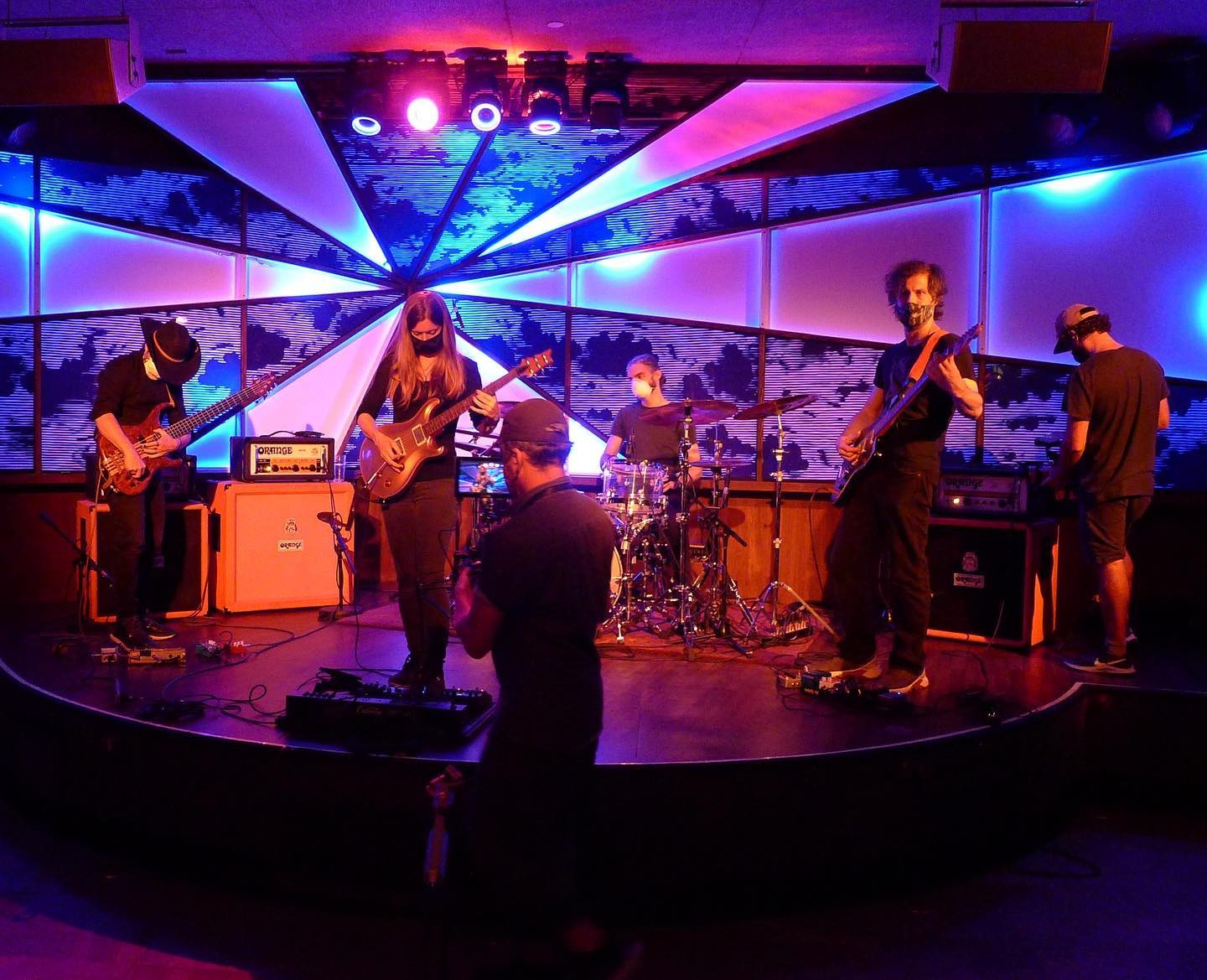We recently connected with Sally Gates and have shared our conversation below.
Sally, thanks for taking the time to share your stories with us today Can you open up about a risk you’ve taken – what it was like taking that risk, why you took the risk and how it turned out?
Scrolling through the questions, this one in particular connected with me, as my musical career has generally been defined by taking risks and chances.
The first major risk I took was moving from New Zealand to the US to pursue music right as I turned 21. I moved by myself, with no family in the country, no job lined up, and no degree to fall back on. (I took a chance and actually won a visa through the Greencard Lottery.)
I landed in Miami of all places, due to musical connections I had from earlier travels. Within months of arriving, I was taken on as the bass player in the band Gigan and immediately headed off on tour. We spent 3-6 months on the road each year, which was invaluable experience and jump-started my career in the States. After a few years of this, I left to focus on guitar full time.
When I felt like things were stagnating in Florida, I decided to move to New York. This was the second major change, and the one that has paid off the most. I made a point to constantly put myself into musical situations that intimidated me, and as a result I’ve grown more and achieved more here in the last four years than at any other point in my career.
Creative careers are made up of all forms of risk. Creating art is a risk in itself, as it relies on vulnerability. For any kind of growth, you must risk leaving your comfort zone and push yourself into doing things that challenge or scare you. Eventually you’ll look back and realise what you are doing now as commonplace was unthinkable just a few short years ago.
Creating your own opportunities and taking chances are other types of necessary risks, whether it’s something as simple as booking your own shows, asking others to collaborate with you, or investing money into a new project. But the alternative is sitting and waiting for things to come to you, which likely, they won’t.


Sally, before we move on to more of these sorts of questions, can you take some time to bring our readers up to speed on you and what you do?
I’m a musician and artist from New Zealand, currently based in New York. I went through various instruments as a kid, before clicking with the guitar at 14. I started playing in bands a few years later, and then relocated to the USA to pursue music. Since arriving, I’ve toured internationally, released albums, worked with performance artists, dived into film scoring, collaborated with some of my favourite musicians, and even played a guitarist on an upcoming TV show.
My band, Titan to Tachyons, is an instrumental group that takes influence from progressive rock, free jazz, and metal. As a visually inspired musician, I use science-fiction storylines as devices to plot song structures, dynamics and textures. Surrealist concepts such as melting, disintegration, and automatism are portrayed through improvisation. The band’s artwork is designed to reflect this themes, keeping a visual aesthetic linked to the likes of David Lynch and Stanley Kubrick.
As an artist, I take on a lot of freelance work for other musicians and various clients. This has included projects such as logo designs, album layouts, product photography, and web design. I also teach music and create instructional videos for clients.
Currently I am working on Titan to Tachyons’ next album, scoring a short horror film, writing solo music, and booking shows for the end of the year.


What can society do to ensure an environment that’s helpful to artists and creatives?
One thing that would make a world of difference would be a basic income. Having the time to create, learn, and develop your craft without straddling the poverty line is invaluable. A few months ago Creatives Rebuild New York ran a funding round to support creatives with a guaranteed income, and over 20,000 artists living under the self-sufficiency standard applied, highlighting a vast financial disparity.
On an individual level, there are the usual ways you can support artists like buying albums, tickets, etc, or even simply reposting content. Attending local concerts goes a long way too, building audiences for bands and creating communities.
The ability to have venues that can support an eclectic musical community is also an essential part of the ecosystem. Thriving scenes are created where anything goes, and there is less pressure to book safer/popular music choices.


Contact Info:
- Website: sallygates.com, titantotachyons.com
- Instagram: @sally.gates, @titantotachyons
- Facebook: https://www.facebook.com/sallymgates/
- Twitter: @titantotachyons
- Other: titantotachyons.bandcamp.com
Image Credits
Janette Valentine Brandon Daza Ron Anderson Greg Meisenberg


